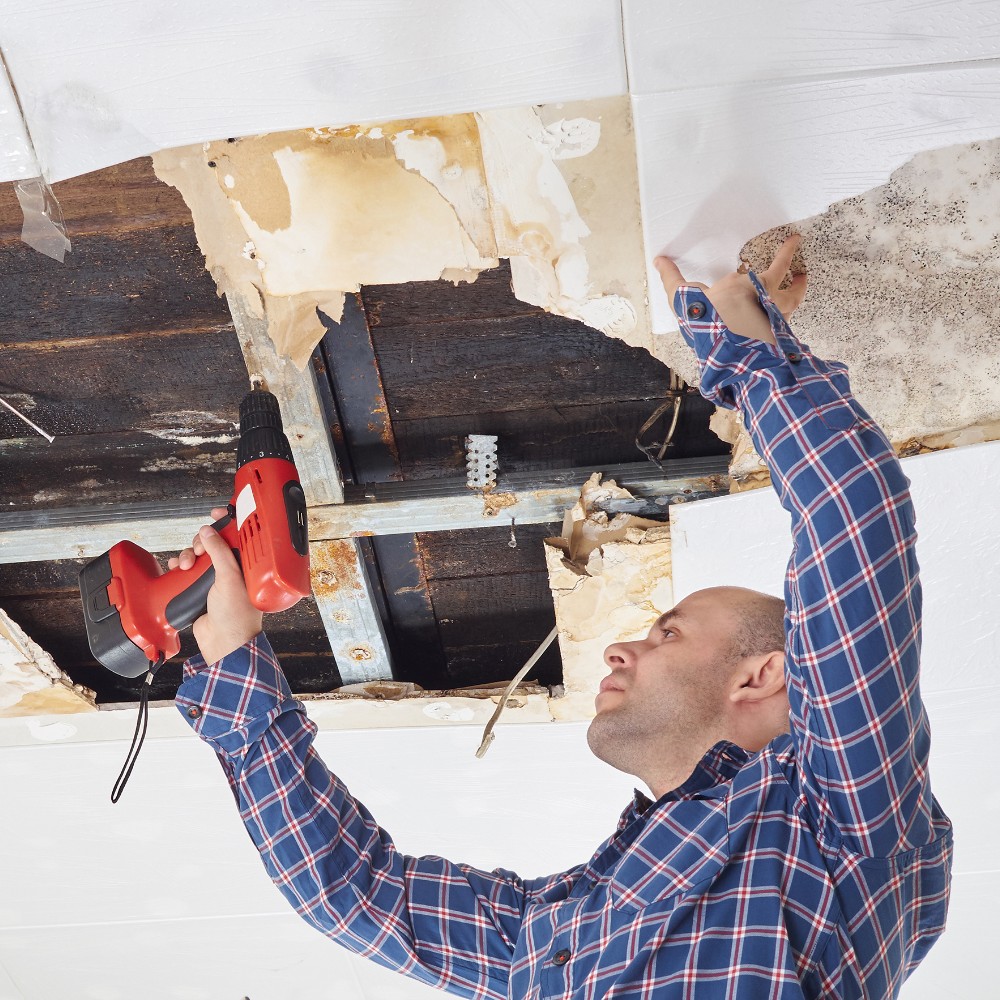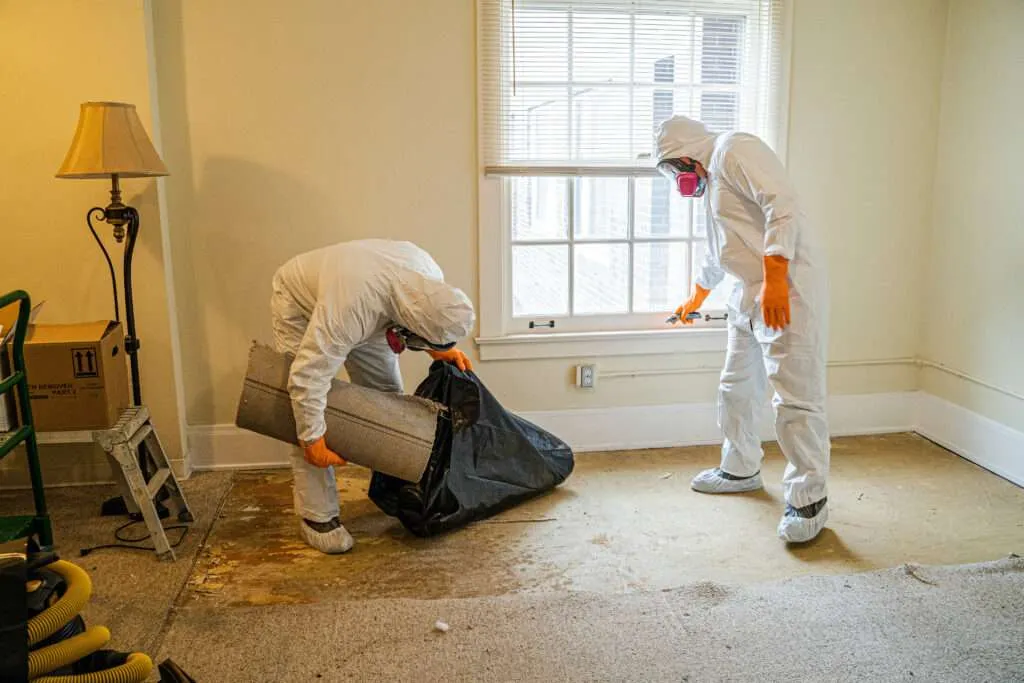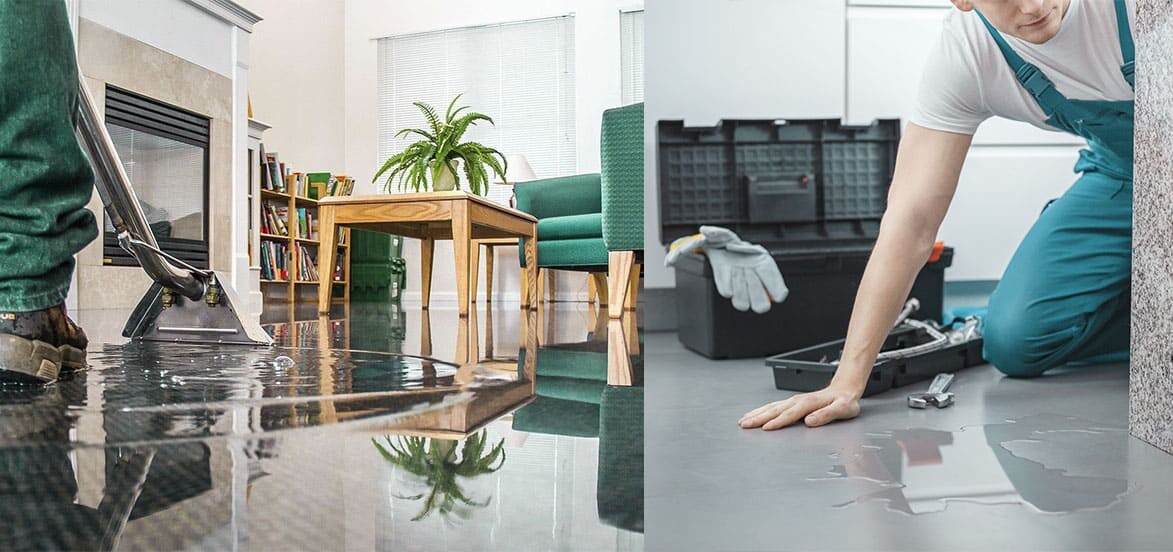Water Damage Restoration 101: Recognizing the Process and Cost
Water damage can strike all of a sudden, leaving home owners in a state of confusion. Recognizing the reconstruction procedure is necessary for effective recovery. From evaluating the damage to picking the best service company, each action influences the general outcome and expense. Elements such as the sort of water damage and seriousness also play a significant function. What are the specific strategies made use of in reconstruction, and exactly how can one plan for prospective costs?
Types of Water Damage

First Assessment and Inspection

Water Extraction Strategies
Adhering to the first analysis, efficient water extraction methods are utilized to alleviate damage and stop further issues. These techniques involve making use of specific devices such as completely submersible pumps and industrial-grade vacuum cleaners - Water Damage Restoration. The choice of method depends on the volume of water existing and the type of products affected. For standing water, completely submersible pumps are typically utilized for quick removal, while vacuum cleaners are excellent for extracting water from carpets and upholstery. Additionally, advanced techniques like water extraction floor coverings might be employed for hard-to-reach areas - Water Damage Restoration. The objective is to eliminate as much water as possible, lessening the potential for mold growth and structural damage. Prompt and reliable water removal is essential in the overall water damage restoration process
Drying and Dehumidification Process
Once the water removal is full, the drying out and dehumidification procedure comes to be critical to restoring the affected area. This stage generally uses industrial-grade dehumidifiers and air movers to properly decrease moisture levels. The dehumidifiers pull in moist air, eliminating excess moisture, while air movers circulate air to increase dissipation. Monitoring equipment is commonly used to track moisture and temperature levels, making sure optimal drying problems. The duration of this process can vary depending on the level of the water damage and environmental factors. It is vital to completely completely dry all impacted materials, including wall surfaces, flooring, and home furnishings, to avoid mold and mildew development and architectural damage. Correct execution of this action is important for an effective repair result.
Cleaning Up and Disinfecting Afflicted Locations
A complete initial analysis and evaluation of affected locations is vital to recognize contamination levels when the drying procedure is complete. Water Damage Restoration. Reliable cleaning strategies and appropriate items must after that be employed to eliminate particles and stains. Sanitization and sanitation methods are crucial to ensure that harmful microorganisms are eliminated, restoring the area to a risk-free condition.
Initial Analysis and Inspection
Prior to beginning any kind of repair initiatives, a complete initial assessment and assessment of the impacted areas are important for reliable cleansing and sanitizing. This procedure entails recognizing the level of water damage, establishing the resource of the water breach, and reviewing the products affected. Inspectors commonly look for signs of mold and mildew development, architectural stability issues, and damaged valuables. The analysis likewise includes inspecting dampness levels using specific devices to assure no surprise water pockets stay, as these can cause more difficulties. Documenting the findings is crucial for intending the next action in the repair procedure. A detailed first analysis allows restoration professionals to develop a targeted technique for effective cleansing and disinfecting, ultimately lessening damage and health and wellness threats.
Cleansing Strategies and Products
Reliable cleansing and sanitizing of water-damaged locations need a variety of methods and products tailored to the specific products impacted. For permeable surface areas like drywall and carpeting, extraction methods are important to eliminate excess dampness, complied with by deep cleaning with specialized detergents. Non-porous materials such as floor tile or metal can be cleansed using commercial-grade cleaners that efficiently remove pollutants. Vapor cleaning is an additional efficient strategy, especially for carpets and upholstery, as it makes use of heats to remove microorganisms and mold and mildew (Flood Cleanup Services). In addition, environment-friendly items are significantly popular for their safety and efficiency - Water Extraction And Drying. Eventually, picking the proper cleansing approaches and items not just assures prompt cleanliness but additionally aids in avoiding further damage and carcinogen connected with water breach
Sanitization and Disinfection Methods
When dealing with water damage, correct sanitization and sanitation approaches are vital to assure the safety and security and health and wellness of the affected setting. After first cleaning, surface areas have to be treated with ideal anti-bacterials to get rid of pathogens, mold, and microorganisms that thrive in moist conditions. Usual methods include using EPA-approved chemical anti-bacterials, which can be applied with splashing or cleaning strategies. Additionally, ultraviolet (UV) light systems can successfully disinfect locations by neutralizing bacteria without rough chemicals. The choice of technique typically depends on the sort of materials influenced and the visite site level of contamination. Inevitably, thorough sanitization not just recovers a safe space however additionally assists avoid future health risks connected with lingering dampness and mold and mildew growth.

Repairs and Restoration Options
Reviewing the damage triggered by water direct exposure is important for determining the appropriate repair services and repair alternatives. Property owners might deal with different concerns, including harmed drywall, distorted flooring, and endangered architectural aspects. Depending upon the level of the damage, repairs might include replacing areas of drywall, installing new flooring, or reinforcing structural light beams. In instances of serious damage, full substitute of affected products may be essential. Additionally, professional restorers usually suggest using dampness meters to examine concealed moisture degrees before determining on the very best strategy. It is very important to act promptly to avoid mold development and additional wear and tear. Picking the best options not just recovers the residential property yet likewise ensures lasting safety and functionality.
Variables Affecting Restoration Costs

The degree of water damage directly affects the restoration sets you back property owners can expect to sustain. Aspects such as the source of the water, the period of exposure, and the damaged products substantially influence pricing. For example, clean water damage from a damaged pipe is normally much less pricey to restore compared to damage brought on by sewer. Furthermore, the level of contamination dictates the requirement for specialized cleansing and disposal solutions, further raising costs. Geographical location also plays a role, as regional labor rates and availability of restoration solutions can vary. The seriousness of the reaction influences expenses; quicker treatments commonly lead to reduce general expenditures by stopping additional damage. Recognizing these variables is important for home owners when estimating reconstruction expenses.
The 3 main types of water damage are categorized based on contamination degrees: clean water, gray water, and black water. An extensive preliminary evaluation and assessment are crucial steps in the water damage restoration process. For standing water, submersible pumps are usually made use of for fast elimination, while vacuum cleaners are ideal for extracting water from carpetings and furniture. The level of water damage straight impacts the restoration sets you back home owners can expect to incur. Clean water damage from a broken pipeline is normally much less expensive to recover contrasted to damage created by sewage.